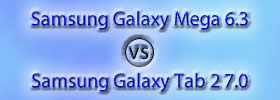Difference between 3G and 4G
Key Difference: 3G stands for “third generation”, and refers to a networking standard in cell phone technology that is capable of providing high-speed data service to mobile devices. On the other hand, 4G stands for “fourth generation”, and refers to the generation of cellular standards. It is a successor to 3G and 2G families of standards.
In 3G and 4G, “G” stands for Generation. 3G and 4G are the most efficient and fastest network for the mobile communication. Their rates of data transferring and signal quality are highly divergent. Let’s understand the basic difference between both the terms.
 3G presently is the world’s best connection method when it comes to mobile Internet. 3G is the abbreviation for third generation. It offers the download speed up to 3.1 Mbps (Mega bytes per second). In the early 1980s, 3G network was developed by the International Telecommunication Union (ITU). It was first released in the U.S. in 2003, with minimum consistent Internet speeds of 144Kbps (Kilo bits per second), but now there are so many varieties of 3G that now anywhere one can get an Internet speed of more than 400Kbps.
3G presently is the world’s best connection method when it comes to mobile Internet. 3G is the abbreviation for third generation. It offers the download speed up to 3.1 Mbps (Mega bytes per second). In the early 1980s, 3G network was developed by the International Telecommunication Union (ITU). It was first released in the U.S. in 2003, with minimum consistent Internet speeds of 144Kbps (Kilo bits per second), but now there are so many varieties of 3G that now anywhere one can get an Internet speed of more than 400Kbps.
Recently, 3.5G and 3.75G were released. It will also provide mobile broadband access of several Mbit/s to smartphones and data cards in laptops and PCs. 3G is the best option for those who always want to stay connected to the Internet.
 4G is the abbreviation for fourth generation. 4G mobile networks are supposed to provide many value added features. When 4G will be connected to smartphones, tablets or computers, it can handle more data than 3G. The formal definition of 4G as declared by the 3GPP and the ITU-T is something called Long Term Evolution-Advanced (LTE-A). A 4G system offers mobile ultra-broadband Internet access. For example: to laptops with USB wireless modems, smartphones and to other mobile devices.
4G is the abbreviation for fourth generation. 4G mobile networks are supposed to provide many value added features. When 4G will be connected to smartphones, tablets or computers, it can handle more data than 3G. The formal definition of 4G as declared by the 3GPP and the ITU-T is something called Long Term Evolution-Advanced (LTE-A). A 4G system offers mobile ultra-broadband Internet access. For example: to laptops with USB wireless modems, smartphones and to other mobile devices.
4G will be faster and it is a WiMAX. WiMAX is nothing, but is a 3G technology by ITU-T like LTE (Long Term Evolution). LTE is what most are calling 4G, but in reality it is just an advanced 3G standard that some call 3.9G. It uses a completely different radio technology. Although in many countries around the world, 4G is not yet released but definitely will get released very soon.
No doubt that the 3G speeds laid underpinning for the increasingly mobile lifestyle, but 4G speeds are truly taking mobiles to the next level.
Comparison between 3G and 4G:
|
|
3G |
4G |
|
Definition |
3G is a mobile communications standard that allows mobile phones, computers, and other portable electronic devices to access the Internet wirelessly. |
4G is a mobile communications standard intended to replace 3G, allowing wireless Internet access at a much higher speed. |
|
Stands for |
Third Generation |
Fourth Generation |
|
Technologies |
Technologies are widespread |
Technologies are still on the horizon |
|
Speed |
3G speeds are faster |
4G speeds are much faster compared to 3G |
|
Switching Method |
3G is a mix of circuit and packet switching network |
4G is only a packet switching network |
|
Services and Applications |
CDMA 2000, UTMS, EDGE, etc. |
WiMAX and LTE-Advance |
|
Upload and Download speed |
Upload – 5Mbps Download - 100 Mbps |
Upload - 500 Mbps Download - 1Gbps |
|
Regularity Band |
1.9 – 2.5 GHz |
2-8 GHz |
Image Courtesy: telecomlead.com, web-tech.fr









Add new comment